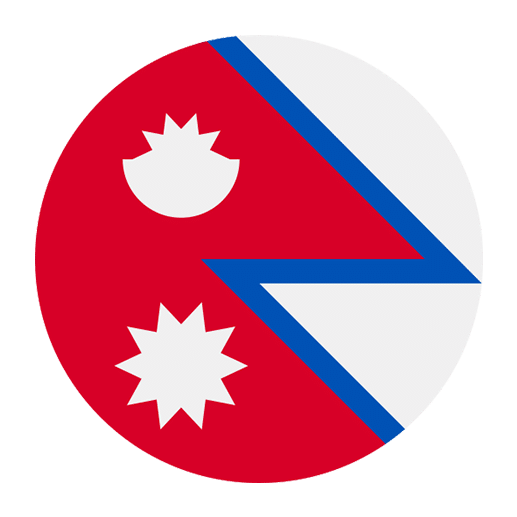Nepali, the official language of Nepal, is a fascinating and beautiful language that belongs to the Indo-Aryan language family. For English speakers, Nepali can seem quite different and challenging due to its unique sentence structure, which follows the Subject-Object-Verb (SOV) order, unlike English’s Subject-Verb-Object (SVO) structure. Understanding this fundamental difference is crucial for mastering Nepali and constructing coherent sentences. This article will delve into the intricacies of Nepali sentence structure, providing insights and practical examples to help you grasp the SOV format.
The Basics of SOV Structure
In English, the typical sentence structure follows the SVO order. For example, “I (Subject) eat (Verb) an apple (Object).” However, Nepali sentences follow the SOV structure, where the verb comes at the end. The Nepali equivalent of the above sentence would be “म (I) स्याउ (apple) खान्छु (eat),” which directly translates to “I an apple eat.”
To break it down:
– Subject (S) – The doer of the action.
– Object (O) – The receiver of the action.
– Verb (V) – The action itself.
This rearrangement can initially seem confusing, but with practice, it becomes more intuitive.
Subject
The subject in Nepali identifies who or what is performing the action in the sentence. For instance:
– “म” (ma) means “I.”
– “ऊ” (u) means “he/she.”
– “हामी” (haami) means “we.”
Object
The object in Nepali is the entity that is affected by the action. Here are a few examples:
– “स्याउ” (syaau) means “apple.”
– “किताब” (kitaab) means “book.”
– “पानी” (paani) means “water.”
Verb
The verb in Nepali always comes at the end of the sentence and describes the action. Some examples include:
– “खान्छु” (khaanchu) means “eat.”
– “पढ्छु” (padhchu) means “read.”
– “पिउछु” (piunchu) means “drink.”
Constructing Simple Sentences
To construct a simple Nepali sentence, follow the SOV order. Here are a few examples:
1. **I eat an apple.**
– म स्याउ खान्छु।
– Ma syaau khaanchu.
2. **She reads a book.**
– ऊ किताब पढ्छे।
– U kitaab padhche.
3. **We drink water.**
– हामी पानी पिउँछौं।
– Haami paani piunchau.
Notice how the verb is always placed at the end of the sentence, following the subject and object.
Complex Sentences and Additional Elements
Nepali sentences can also include additional elements like adjectives, adverbs, and postpositions. Understanding how these elements fit within the SOV structure is essential for forming more complex sentences.
Adjectives
Adjectives in Nepali typically precede the nouns they modify. For example:
– “रातो स्याउ” (raato syaau) means “red apple.”
– “ठूलो घर” (thulo ghar) means “big house.”
When constructing a sentence with adjectives:
– “I eat a red apple.”
– म रातो स्याउ खान्छु।
– Ma raato syaau khaanchu.
Adverbs
Adverbs in Nepali usually come before the verb they modify. Here are a few examples:
– “द्रुत” (drut) means “quickly.”
– “धीरे” (dheere) means “slowly.”
Consider the sentence:
– “I eat quickly.”
– म द्रुत खान्छु।
– Ma drut khaanchu.
Postpositions
Unlike prepositions in English, Nepali uses postpositions, which come after the noun. Some common postpositions include:
– “मा” (ma) means “in.”
– “बाट” (baata) means “from.”
– “सँग” (sanga) means “with.”
For example:
– “I am in the house.”
– म घरमा छु।
– Ma gharma chu.
– “She came from school.”
– ऊ स्कूलबाट आएकी।
– U skoolbaata aaeki.
– “We are with friends.”
– हामी साथीहरूसँग छौं।
– Haami saathihaaru sanga chhau.
Negation and Questions
Negation
To form negative sentences in Nepali, the word “छैन” (chaina) is used for “is not/are not,” and “न” (na) is placed before the verb for other tenses.
For example:
– “I do not eat an apple.”
– म स्याउ खान्न।
– Ma syaau khanna.
– “She is not here.”
– ऊ यहाँ छैन।
– U yahaa chaina.
Questions
To form questions in Nepali, the structure remains SOV, but the intonation changes, and sometimes a question particle like “के” (ke) is used at the beginning.
For example:
– “Do you eat an apple?”
– के तिमी स्याउ खान्छौ?
– Ke timi syaau khaanchhau?
– “Is she here?”
– के ऊ यहाँ छ?
– Ke u yahaa cha?
Practice and Immersion
The best way to become comfortable with the Nepali SOV sentence structure is through practice and immersion. Engaging in conversations with native speakers, listening to Nepali media, and consistently practicing sentence construction can significantly enhance your understanding and fluency.
Daily Practice
Incorporate Nepali into your daily routine by:
– Translating simple English sentences into Nepali.
– Practicing with language partners or tutors.
– Using language learning apps that focus on Nepali.
Listening and Speaking
Listening to Nepali songs, watching Nepali movies, and speaking with native speakers can help you internalize the SOV structure. Pay attention to how sentences are formed and try to mimic the patterns.
Conclusion
Mastering the Nepali SOV sentence structure is a crucial step in becoming proficient in the language. While it may seem challenging at first, consistent practice and immersion can make it more intuitive. Remember to focus on the placement of the subject, object, and verb, and gradually incorporate additional elements like adjectives, adverbs, and postpositions into your sentences. By understanding and applying these principles, you will be well on your way to forming coherent and grammatically correct sentences in Nepali. Happy learning!

